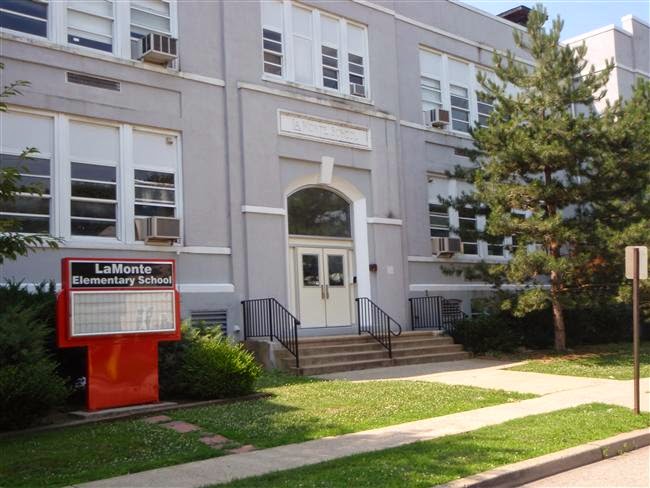 Kindergarteners making their way to LaMonte School know without a glance to turn at the cut-through road between the flood prone southside and the rise of land to the north. These children of immigrant families have no inkling that LaMonte Avenue was paved by slave labor.
Kindergarteners making their way to LaMonte School know without a glance to turn at the cut-through road between the flood prone southside and the rise of land to the north. These children of immigrant families have no inkling that LaMonte Avenue was paved by slave labor.Then disaster struck in the form of the Union army, driving George and his pregnant wife first farther south to the last capital of the Confederacy in Danville and then north with their newborn son George Mason LaMonte. The Kern-Mason-Thweatt families would soon realize the value of a Yankee son-in-law, for the LaMontes were able to convert the accumulated family wealth from trade in tobacco and slaves into northern currency. George was appointed president of the newly formed First National Bank of New York (now Citibank). He then purchased the old Talmadge Farm on the west end of a sleepy village thirty miles from the city soon to be incorporated as Bound Brook, New Jersey. Before long he developed and started manufacturing the safety paper that Rebecca, a prolific writer and saver of letters, used to return the wealth back to her families of origin in reconstructionist Virginia.
"In 1871 he (George LaMonte) established the manufacturing of the "national safety paper" used for the protection of checks and similar financial documents and which soon came into general use in the banking world." (Bound Brook Chronicle 10/24/1913)
Bound Brook became an immigrant town in the late 1800s to staff the LaMonte woolen mill along the Raritan River. The family donated land and funds for a new elementary school and neighboring immigration house (now Green Brook Academy) for the growing Italian and Polish community, establishing a pattern of settlement by train from New York that grew with the influx of chemical, asbestos, and plastics factories between the World Wars and that continues with today's Hispanic diaspora.

No comments:
Post a Comment